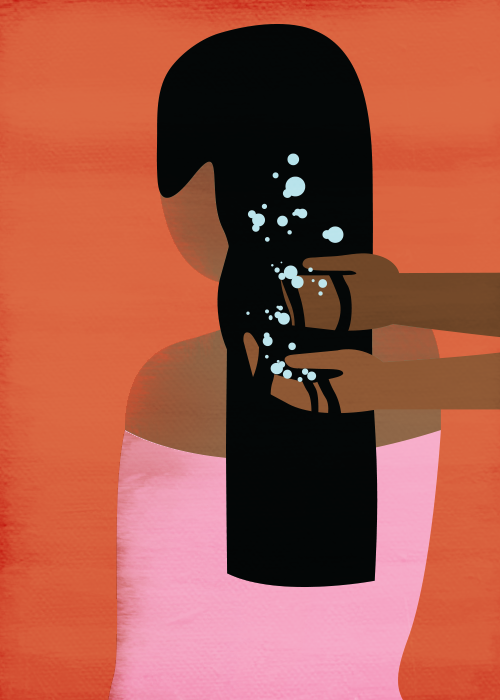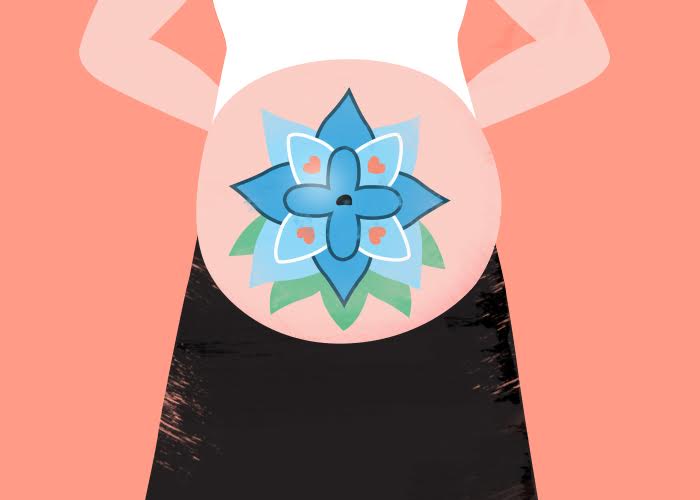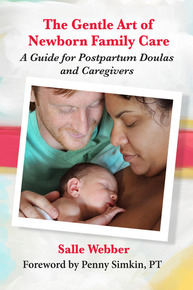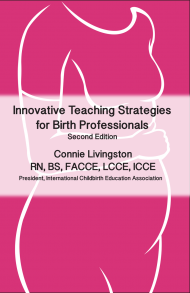Is ours not a strange culture that focuses so much attention on childbirth—virtually all of it based on anxiety and fear—and so little on the crucial time after birth, when patterns are established that will affect the individual and the family for decades? - Suzanne Arms.
As citizens of an industrialized nation, we often act as if we have nothing to learn from low-income, developing countries. Yet many of these cultures are doing something extraordinarily right—especially in how they care for new mothers. In their classic paper, Stern and Kruckman (1983) present an anthropological critique of the literature. They found that in the cultures they studied, postpartum disorders, including the “baby blues,” were virtually nonexistent. By contrast, 50% to 85% of new mothers in industrialized nations experience the “baby blues,” and 15% to 25% (or more) experience postpartum depression.
 Ken Tackett
Ken Tackett
What makes the difference?
Stern and Kruckman noted that cultures who had a low incidence of postpartum mood disorders all had rituals that provided support and care for new mothers. These cultures, although quite different from each other, all shared
5 protective social structures

Ken Tackett
- A distinct postpartum period. In these other cultures, the postpartum period is recognized as a time that is distinct from normal life. It is a time when the mother is supposed to recuperate. Her activities are limited and her female relatives take care of her. This type of care was also common in colonial America, when postpartum was referred to as the “lying-in” period. This period functioned as a time of “apprenticeship,” when more experienced mothers mentored the new mother.
- Protective measures reflecting the new mother’s vulnerability. During the postpartum period, new mothers are recognized as being especially vulnerable. Ritual bathing, washing of hair, massage, binding of the abdomen, and other types of personal care are prominent in the postpartum rituals of rural Guatemala, Mayan women in the Yucatan, Latina women both in the United States and Mexico. These rituals also mark the postpartum period as distinct from other times in women’s lives.
- Social seclusion and mandated rest. Postpartum is a time for the mother to rest, regain strength, and care for the baby. Related to the concept of vulnerability is the widespread practice of social seclusion for new mothers. For example, in the Punjab, women and their babies are secluded from everyone but female relatives and their midwives for five days. Seclusion is said to promote breastfeeding and it limits a woman’s normal activities. In contrast, many American mothers are expected to entertain others—even during their hospital stay. Once they get home, this practice continues as they are often expected to entertain family and friends who come to see the baby.
- Functional assistance. In order for seclusion and mandated rest to occur, mothers must be relieved of their normal workload. In these cultures, women are provided with someone to take care of older children and perform their household duties. As in the colonial period in the United States, women often return to the homes of their family of origin to ensure that this type of assistance is available.
- Social recognition of her new role and status. In the cultures Stern and Kruckman studied, there was a great deal of personal attention given to the mother. In China and Nepal, very little attention is paid to the pregnancy; much more attention is focused on the mother after the baby is born. This has been described as “mothering the mother.” For example, the status of the new mother is recognized through social rituals and gifts. In Punjabi culture, there is the “stepping-out ceremony,” which includes ritual bathing and hair washing performed by the midwife, and a ceremonial meal prepared by a Brahmin. When the mother returns to her husband’s family, she returns with many gifts she has been given for herself and the baby. The following is a description of a postpartum ritual performed by the Chagga of Uganda. It differs quite a bit from what mothers in industrialized countries may experience. 
Three months after the birth of her child, the Chagga woman’s head is shaved and crowned with a bead tiara, she is robed in an ancient skin garment worked with beads, a staff such as the elders carry is put in her hand, and she emerges from her hut for her first public appearance with her baby. Proceeding slowly towards the market, they are greeted with songs such as are sung to warriors returning from battle. She and her baby have survived the weeks of danger. The child is no longer vulnerable, but a baby who has learned what love means, has smiled its first smiles, and is now ready to learn about the bright, loud world outside (Dunham, 1992; p. 148).
What American mothers experience
 Ken Tackett
Ken Tackett
By contrast, American mothers often find that people are more concerned about them before the birth. While a woman is pregnant, people may offer to help her carry things or to open doors or to ask how she is feeling. Friends will give her a baby shower, where she will receive emotional support and gifts for her baby. There are prenatal classes and prenatal checkups, and many people wanting to know about the details of her daily experience.
After she has her baby, however, mother-focused support rapidly declines. Typically, a woman is discharged from the hospital within 24 to 48 hours after a vaginal birth, or 2 to 4 days after a cesarean section. She may or may not have anyone to help her at home—chances are no one at the hospital has even asked. Her mate will probably return to work within the week, and she is left alone to make sure she has enough to eat, to teach herself to breastfeed, and to recuperate from birth. The people who provided attention during her pregnancy are no longer there, and the people who do come around are often more interested in the baby. There is the tacit—and sometimes explicit—understanding that she is not to “bother” her medical caregivers unless there is a medical reason, and she must wait to talk to her physician until her six-week postpartum checkup. There probably are resources in her community that may help, but she has no idea where they are, and feels too overwhelmed to seek them out for herself. So she must fend for herself as best she can.
 Ken Tackett
Ken Tackett
Is it any wonder that many women find the postpartum period to be extremely stressful? One popular book written for new mothers (Eisenberg, et al., 1989) describes this transition as “the reverse Cinderella—the pregnant princess has become the postpartum peasant” with a “wave of the obstetrician’s wand” (p. 546).
Here are some comments mothers have shared with me.
I felt like I didn’t matter.
I felt like they weren’t interested in me after I had my baby. My husband said, “Of course they are not interested. You’ve had your baby.”
After the birth, I had several people tell me that the most important thing was that I had a healthy baby. Yes, that is important. But what about me? No one pays attention to the fact that you’ve had major surgery. They would have paid more attention if I’d had had my appendix out.
As a culture, we have woefully neglected the needs of new mothers. But this was not always so. Historically, we recognized the importance of a community of women helping women, who provided this much needed practical and emotional assistance. In so doing, they provided a chance for postpartum women to recuperate and assimilate the major change that had taken place in their lives. Chances are it will be many years before there are organized efforts aimed at providing care for new mothers. The good news is that a grassroots movement has begun that seeks to meet the needs of postpartum women.
 In store
In store
The word “doula”—from the Greek word for servant—is becoming part of our vocabulary. A postpartum doula is someone who takes care of postpartum women by providing practical and emotional assistance (Lim, 1995; Webber, 1992). Friends, family or a woman’s partner can be doulas. Or women in some communities might be able to hire a professional doula. In either case, the doula movement is in response to the lack of postpartum care available from traditional care providers.
In the following account, doula Salle Webber describes her care for new mothers and the types of support and assistance that they need.
In my work as a doula, my focus is on the mother. I want to provide whatever it is that she needs to feel comfortable, nourished, relaxed, and appreciated: to facilitate a harmonious transition for both mother and child in those profound first days and weeks after birth.
A mother needs someone who cares about how many times the baby woke to nurse in the night, how many diapers were changed, how her breasts are feeling. She may need her back massaged or her sheets changed, or she may need someone to provide an abundant supply of water or tea, salads ready-made in the refrigerator, a bowl of cut-up fruit. She needs to be able to complain about how little her mate understands what she’s going through, and perhaps, some gentle reminders of all the contributions he has made. She needs someone to hold the baby so she can take a shower or even go to the bathroom; someone to answer the phone when she’s napping; someone to water her plants or garden, to clean the kitchen and bathroom, to keep up on the family’s laundry. She may have many questions and concerns that only an experienced mother can understand. She needs patience and kind words and a clean and calm environment (Webber, 1992, p. 17).
While our culture continues to lack supportive postpartum rituals, the work of individual women can make a significant difference. Many are surprised that this decidedly “low-tech” intervention can work. Yet this is perhaps the most important lesson we can learn from the cultures that Stern and Kruckman described.
We must begin to change the way we think about providing care for new mothers. This care should not stop once the baby is born, but should continue throughout the postpartum period.
In conclusion, we have learned that women can make a comfortable and peaceful transition into motherhood. Postpartum mental illness is not inevitable and in many cases can be prevented. It is time that we recognize and meet the needs of postpartum women. The health of our families depends on it.
References
Eisenberg, A., Murkoff, H.E., & Hathaway, S.E. (1989). What to Expect the First Year. New York: Workman.
Lim, R. (1995). After the Baby’s Birth: A woman’s way to wellness. Berkeley, CA: Celestial Arts. New edition: (2004). After the Baby’s Birth: A Complete Guide for Postpartum Women.
Stern, G. & Kruckman, L. (1983). Multidisciplinary perspectives on postpartum depression: An anthropological critique. Social Science and Medicine, 17, 1027-1041.
Webber, S. (1992). Supporting the postpartum family. The Doula, 23, 16-17.
Kathleen Kendall-Tackett, PhD, IBCLC, FAPA
Dr. Kendall-Tackett is a health psychologist and International Board Certified Lactation Consultant,  and the owner and Editor-in-Chief of Praeclarus Press, a small press specializing in women’s health. She is Editor-in-Chief of two peer-reviewed journals: Clinical Lactation and Psychological Trauma. She is Fellow of the American Psychological Association in Health and Trauma Psychology, Past President of the APA Division of Trauma Psychology, and a member of the Board for the Advancement of Psychology in the Public Interest. Dr. Kendall-Tackett specializes in women’s-health research including breastfeeding, depression, trauma, and health psychology, and has won many awards for her work including the 2016 Outstanding Service to the Field of Trauma Psychology from the American Psychological Association’s Division 56.
and the owner and Editor-in-Chief of Praeclarus Press, a small press specializing in women’s health. She is Editor-in-Chief of two peer-reviewed journals: Clinical Lactation and Psychological Trauma. She is Fellow of the American Psychological Association in Health and Trauma Psychology, Past President of the APA Division of Trauma Psychology, and a member of the Board for the Advancement of Psychology in the Public Interest. Dr. Kendall-Tackett specializes in women’s-health research including breastfeeding, depression, trauma, and health psychology, and has won many awards for her work including the 2016 Outstanding Service to the Field of Trauma Psychology from the American Psychological Association’s Division 56.
 Dr. Kendall-Tackett has authored more than 400 articles or chapters, and is currently completing her 35th book, The Phantom of the Opera: A Social History of the World’s Most Popular Musical. Her most recent books include: Depression in New Mothers, 3rd Edition (2016, Routledge UK, in press), Women’s Mental Health Across the Lifespan (2016, Routledge US, in press, with Lesia Ruglass), Psychology of Trauma 101 (2015, Springer, with Lesia Ruglass) and The Science of Mother-Infant Sleep (2014, Praeclarus, with Wendy Middlemiss). Her websites are:
Dr. Kendall-Tackett has authored more than 400 articles or chapters, and is currently completing her 35th book, The Phantom of the Opera: A Social History of the World’s Most Popular Musical. Her most recent books include: Depression in New Mothers, 3rd Edition (2016, Routledge UK, in press), Women’s Mental Health Across the Lifespan (2016, Routledge US, in press, with Lesia Ruglass), Psychology of Trauma 101 (2015, Springer, with Lesia Ruglass) and The Science of Mother-Infant Sleep (2014, Praeclarus, with Wendy Middlemiss). Her websites are: